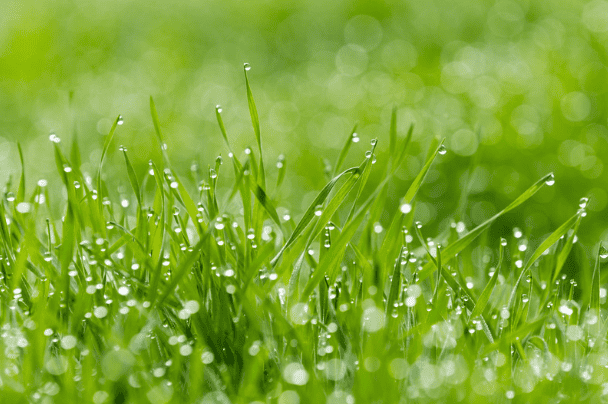For many Western Australians, maintaining a lush green lawn is a source of pride. However, the unique climate in Perth and throughout WA consists of long dry Summers and mild, wet Winters, which can often leave lawns extra susceptible to various lawn diseases. Identifying these lawn diseases early and applying the most appropriate treatment is critical in preventing serious damage to your lawn and helping to get it looking healthy and vibrant in no time.
As a trusted Perth turf provider, Carabooda Lawn understands the challenges that disease can pose to turf. In the blog below, we will discuss the most common diseases affecting lawns throughout Perth, WA, as well as advice and treatment options.
Identifying Lawn Disease
It can be difficult to identify what type of disease is affecting your Perth lawn. There are a few observations you can make that can help:
- Pattern of damage: Are the areas circular, irregular or streaky?
- Leaf/Blade symptoms: Do the blades of grass have spots, lesions or discolouration? If so, what are the colours and shapes of the markings?
- Time of year and climate: When did the symptoms first appear? Was it after rain or during a dry spell, etc.?
- Type of turf: What type of Perth turf do you have? Is it Buffalo, Couch, Kikuyu or something else? Certain turf varieties are more susceptible to disease than others.
- Is there fungi? Do you see any types of fungal growth, such as mushrooms?
Common Lawn Diseases in WA
Now that you know what issues are present in your lawn, you can use the observations to diagnose what lawn disease your turf may have. There are several fungal diseases that are known to affect WA lawns, including:
Brown Patch (Rhizoctonia Solani)
Easily identified by brown or tan patches that can range from a few centimetres to over a metre in size, the edges of the patch often contain a purplish or dark brown ring, particularly clear in the early mornings when the lawn has dew.
Brown Patch usually forms as a result of high-humidity environments, warm temperatures, or conditions when the turf has either been overwatered or has poor drainage. It can be found on Couch, Kikuyu and Buffalo turf, among others.

Dollar Spot (Sclerotinia Homoeocarpa)
Dollar Spot can be identified by small, circular patches of dead, bleached white grass, typically ranging between 2-5cm in diameter, or the size of a dollar coin (hence the name).
This lawn disease often presents in environments where there are low nitrogen levels and dry soil, followed by extended periods of high humidity and moderate to high temperatures, such as spring and autumn. In Perth, this is often the case on nutrient-deficient lawns. Dollar Spot is mostly present in some Couch turf varieties.
Fairy Ring (Basidiomycete Fungi)
Best identified due to the large circular or semi-circular rings of dark green, fast-growing grass, Fairy Ring is often accompanied by a zone of dead/dying grass on the inside or outside of the ring. Technically, a fungus as opposed to a disease. If left untreated, mushrooms can form inside the ring, particularly in wetter environments such as after rain.
Fairy Ring often develops due to decomposing matter being left in the soil because of a poor soil structure or dry conditions. It occurs on all types of turf in WA, year-round, but is more noticeable after rainfall.

Pythium Blight (Pythium spp.)
Pythium Blight can show as small red/brown spots or streaks on your turf, often spreading rapidly through water-soaked patches of lawn. Sometimes, this can present as a white, cotton-like growth and can appear streaky along water drainage patterns.
This disease mostly thrives in high-humidity environments where there is excessive rainfall or poor drainage during warm to hot temperatures, particularly in Perth’s Summer months.
Treating Lawn Disease in WA
Now that you have identified the disease, you most likely will want to treat the lawn promptly. Below are some guidelines that make use of some of the lawn products we can provide.
Often, the simplest solution is going back to basics and understanding what conditions in your lawn are causing the disease. Steps can include changing how you are watering the lawn. Water deeper and less frequently, preferably earlier in the day, to allow evaporation, whereby the blades of grass can dry before nightfall. Ensure your soil has good drainage and avoid overwatering.
Ensure that your mower is well-maintained and has nice, sharp blades for a clean leaf cut, as blunt mower blades bruise the leaf of your turf, cutting unevenly and weakening the leaf structure of your beautiful turf. Check that you are mowing your turf at the correct height for your type of grass to allow for good airflow, preventing habitats for disease and insect pests. Our Team can provide you with a recommended mowing height guide depending on what type of lawn you purchased.
Our Farm Manager – Clayton Philp, who has experience growing and maintaining many turf varieties over the past 35 years, says,
“Sharp mower blades or dull blades will tear the grass, creating wounds that are easy entry points for pathogens.
Maintain the correct mowing height for the species of grass; cutting grass too low will place your turf under stress.
Remove clippings from your turf after mowing; rotting clippings will contribute to thatch, which can harbour pathogens and reduce airflow.
Aeration is also a good practice in Spring, ensuring air and water penetration and promoting healthy root growth.”
Fertilising the lawn is an important step to help your grass survive the WA climate. Our granular fertiliser, specially formulated for WA conditions, allows slow-release nutrients into the lawn for strong, consistent growth.
If you keep on top of regular mowing and avoid over-watering or watering late in the day, you can avoid purchasing fungicides. If you do purchase a fungicide at places like Bunnings, they will often list on the packaging what diseases they can treat, as well as have a list of careful instructions to follow, such as the timing of the application and how to apply the fungicide.
“Balanced fertilisation is very important; under-fertilising can lead to weak turf, and over-fertilising can lead to lush, succulent growth, making your turf susceptible to certain diseases.”
Preventing Lawn Disease in WA
It is often said that prevention is better than a cure. While you can’t guarantee that your lawn will never get a disease, there are some steps you can take to lower the risk.
“Controlling disease is best achieved through a comprehensive approach known as Integrated Pest Management.
The focus is on preventing disease outbreaks by optimising turf health and only using chemicals as a last resort.”
Choose Disease-Resistant Turf Varieties:
When first installing Turf in Perth and WA, you should choose a turf variety that is well-suited for WA’s climate. Carabooda Lawn produces a variety of turf types for different environments, whether in full sun or in partial shade.
“Choosing resistant varieties is one of the most important decisions. Choose varieties that are known to be disease resistant.”
We love helping WA locals achieve healthy, disease-resistant lawns, allowing their families and pets a place to enjoy, as well as keeping their gardens looking great. If you are looking for a lawn disease-resistant turf option, then look no further than a Perth Turf grown by Carabooda Lawn.
Discover our other blogs to help keep your lawn looking healthy!




